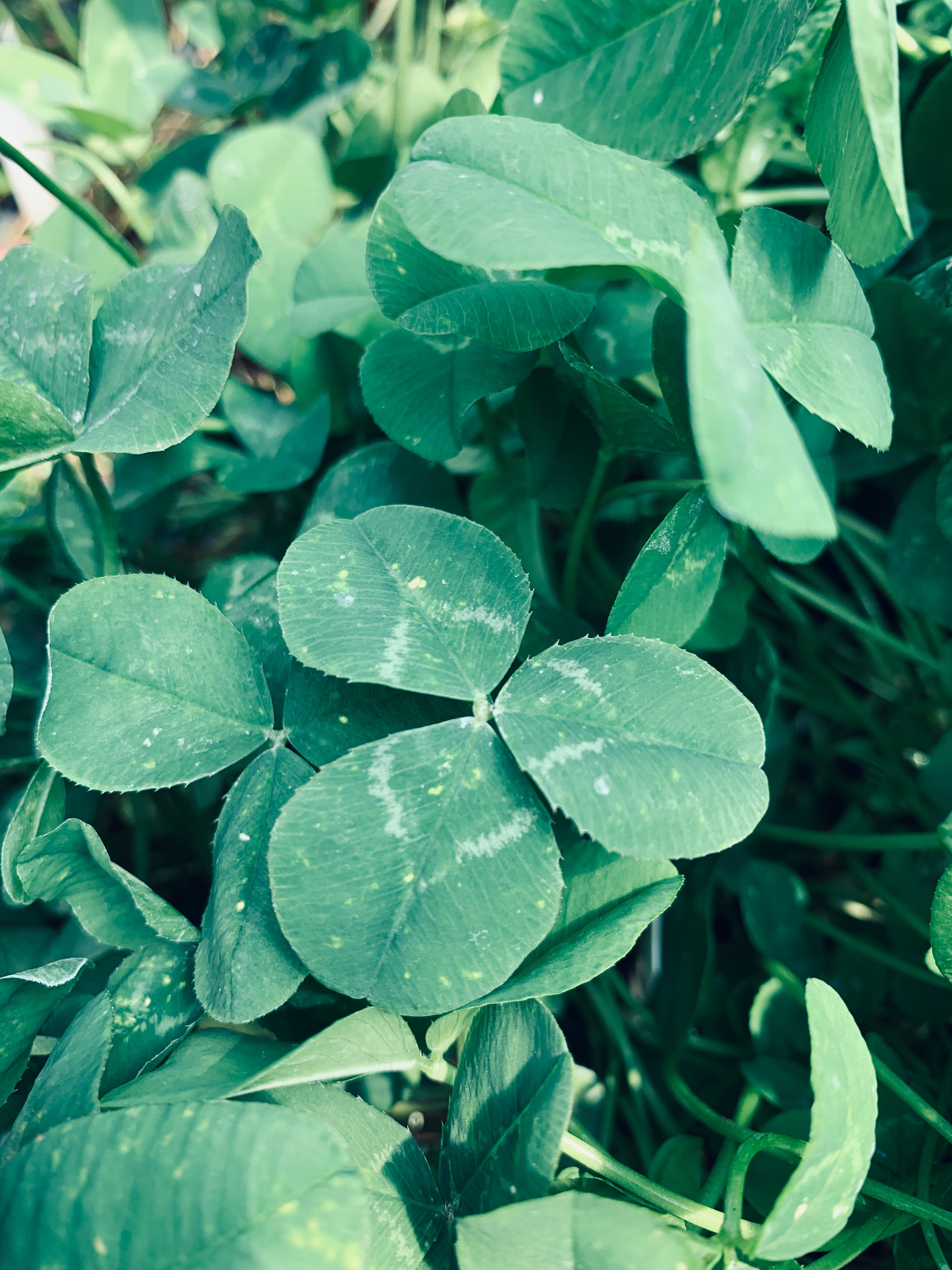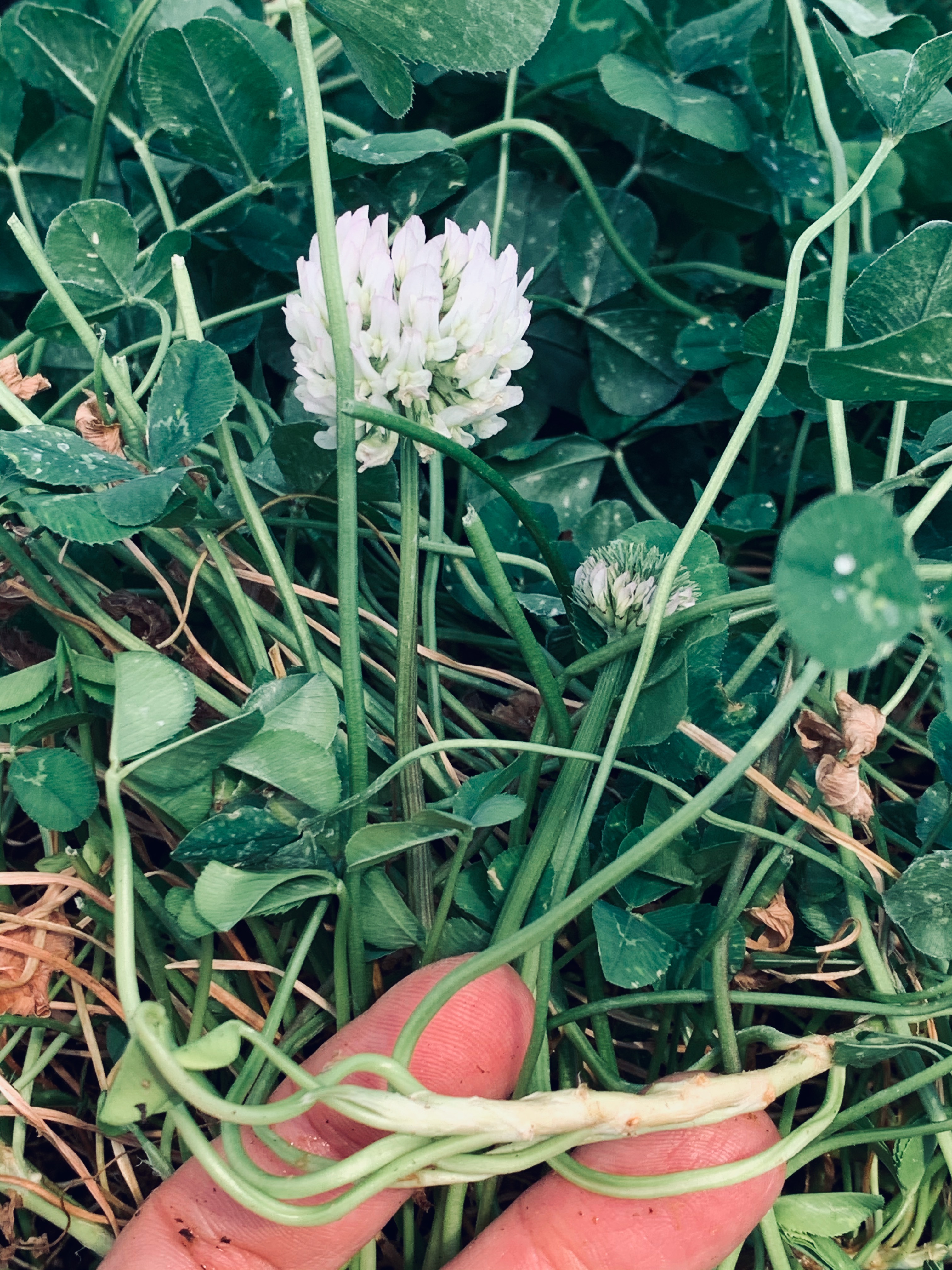| Scientific name: | Trifolium repens |
| Cultivars: | Divided into large (Most common: Ladino), intermediate (grassland huia), and small (New York). |
| Origin: | Europe |
| Growth Habit: | Prostrate with stolons |
| Life Cycle: | Perennial |
| |
| Use |
| |
| Production: | Hay, pasture, silage, wildlife, and erosion control |
| Nutritive Value: | Highly palatable, good protein source with grass |
| |
| Identification |
| |
| Seed Head: | Semi-globose (Capitate), white flowers |
| Seed: | 1-2mm, mitten shaped, light tanInoculate with proper N-fixing bacteria type (if seed is not coated or pre-inoculated). |
| Shoot: | Round, slender |
| Leaf: | Watermark, rounded edges, trifoliate |
| |
| Adaptation |
| |
| Soil: | Clay and silt |
| pH: | Neutral |
| Moisture: | Prefers moist climate |
| Temperature: | Cool season |
| Other: | |
| |
| Establishment - Management |
| |
| Seeding rate: | 4lbs/acre if seeded alone, 1lb/acre in 25% mix with grasses |
| Seed cost: | $5/lb; $20/acre (alone); $5/acre (in mixes) |
| Planting date: | Spring seeding recommended. Late summer or fall seedings require sufficient moisture and a minimum of 6 weeks before frost. |
| Planting depth: | 1/8-1/4" |
| Frost seeding: | Yes |
| Fertilization: | Lime, P, and K by soil test |
| Grazing: | Rotational grazing recommended to maintain ~50% clover cover. Continual systems should graze at 6" and stop at 2", with a 2-4 week rest. |
| Hay: | Pre-wilting is recommended |
| |
| Notes |
| Bloat potential |
| |
| Photos |
|

White clover

White clover leaf. Leaflets, three per leaf, are round-shaped.

White clover stolons
|